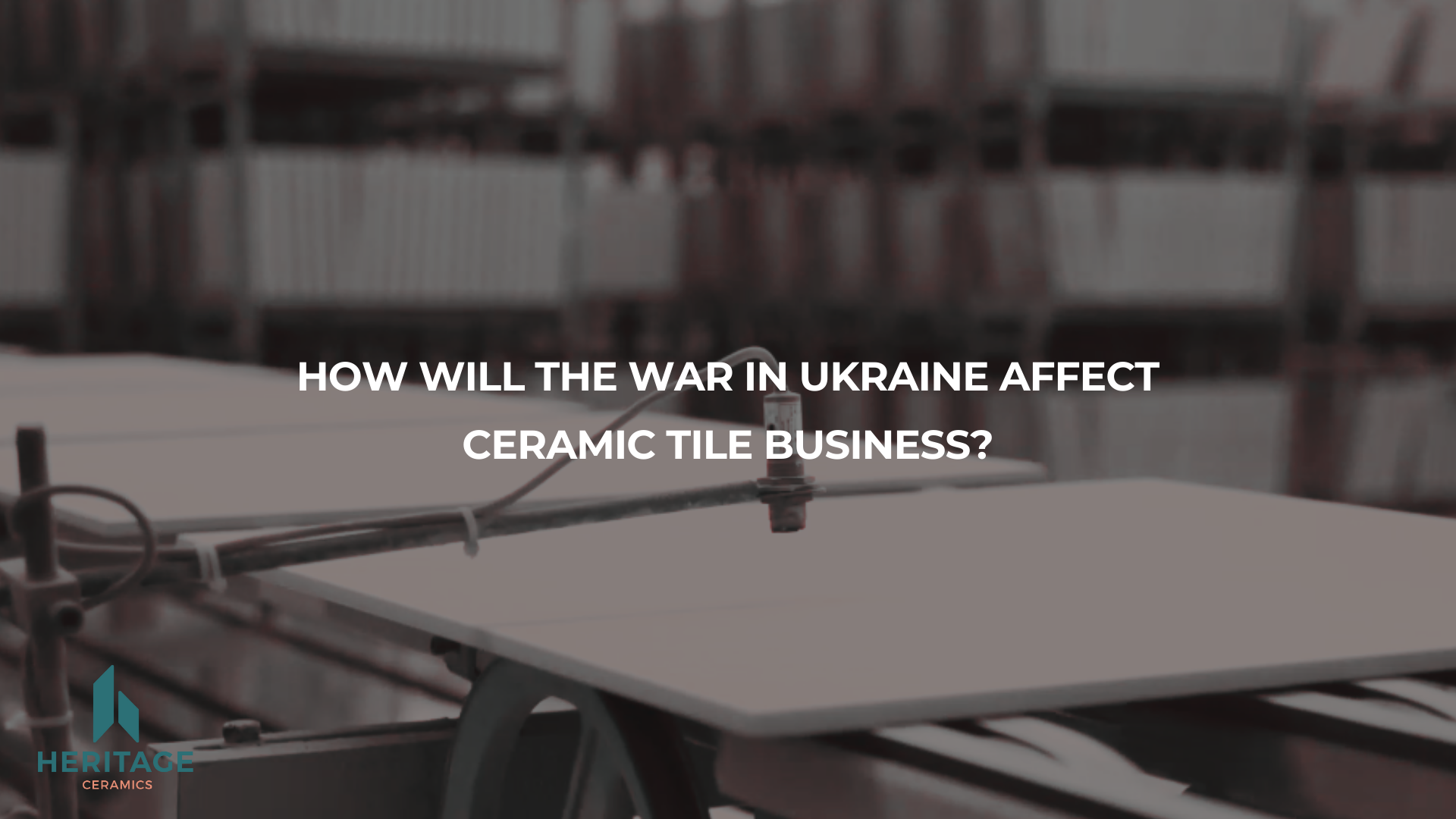On the 24th February 2022, Russia launched a full-scale invasion on Ukraine. The Russian attack on Ukraine to date has sent shockwaves around the world. In a span of less than a month, the war has had far reaching effects on many sectors of the world economy.
This article looks at how the war has affected the production of ceramic tiles in the major tile hubs around the world, and its detrimental effects.
Prior to the war, Russia and Ukraine were both a source of energy and raw materials for many ceramic tile producers. Ukraine understandably is hampered in its supply as a result.
The supply from Russia was also halted due to many financial sanctions imposed in various countries. In short, this supply has to be met from other sources outside Russia and Ukraine.
Since the war, supplies have become limited, resulting in ceramic tiles producers having to shoulder heavy stresses on their own productions.
Russia is the bloc’s greatest single supply of energy. Overall, Russia supplied around one-third of European natural gas usage, which is utilized for heating, power generation, and industrial production.
Russia also provides more than a quarter of the EU’s crude oil imports. European manufacturers of ceramic tiles depend on Ukraine for supply of natural gas and kaolin clay.
In Spain, many manufacturers have started to send out notices to their customers informing of price increases.
The Dutch TTF Gas Price is seen as a Europe-wide natural gas price benchmark.
In the week between 28 February and 7 March, gas prices spiked to €227.2/MWh the war. It is interesting to note that TTF Gas Prices were hovering at about €60/MWh before the conflict. Manufacturers have used an allowance on top of the TTF Gas. Price before the conflict as a base, and any increase over this base price in gas will be multiplied by a factor to arrive at an eventual surcharge.
As the manufacturers negotiate gas contracts on a monthly basis, this surcharge will vary from month to month depending on the average TTF Gas Price over the month.
Although prices have since dropped, it is still at 80% higher than before the conflict. Understandably, the prices of electricity have also tripled during this period.
This has led to the members of the Spanish Tile Manufacturers Association to say that no manufacturer will be able to withstand such cost increases, and that halting production is a distinct possibility.
Due to the lack of supply, Italian manufacturers are scrambling to find alternatives. They have also declared that the shortage may force manufacturers to go back to utilising coal in their ceramic tile production. This in turn led to coal prices increasing, on 3 March 2022, by 300% to USD400/tonne.
Many big name manufacturers like Monocibec, Piemme, ABK, Marazzi and Iris have had to shut some of their lines. Confindustria Ceramica, the association representing Italian ceramic tile manufacturers, expect that the overall production of Italian made tiles will reduce by 30% in the year 2022, and that Italy might have to consider importing tiles from Turkey, India and Middle East to satisfy demand.
Manufacturers in Poland have also decided to stop manufacturing for a month due to the high cost of production.
Gas prices in China were rising steadily in the last quarter of 2021. This was firstly due to increased orders from producers who were gradually restarting after COVID lock-downs. Secondly, the government had to reallocate energy resources to the north for the impending winter.
Just out of the Lunar New Year break in February 2022, many ceramic producers were restarting their lines, but this was to be short-lived. The shortage of natural gas supplies from Ukraine had a spill down effect on gas prices in China.
For example, Guandong Zhujiang Natural Gas Co Ltd, a major supplier of natural gas to the ceramic tile factories, increased their prices of natural gas five times over a span of 12 days from 12 February 2022,an unprecedented move equal to an effective increase of about 85%.
Suppliers of natural coal have also increased prices in tandem. Many manufacturers have had to put their initial plans to fire up their kilns on hold.
Needless to say, manufacturers who were operating normally sought the opportunity to increase prices.
Morbi, India’s largest ceramic tile producing region, suffered a detrimental impact. The supply shortage of kaolin clay from Ukraine has forced producers to reduce their output drastically. This has put pressure on their operation costs.
This ongoing war have caused significant impacts on all manufacturers and suppliers.
Energy costs eg natural gas, coal etc account for approximately 30 to 40% in the overall production costs of ceramic tiles. Needless to say, prices are directly affected as evidenced in the widespread price increases.
Coupled with elevated shipping rates, this double whammy has led to an upward spiral in the landed costs of tiles worldwide.
Ceramic tile production volumes have dropped as many factories have reduced their operations. Some factories are reporting pauses on operations for up to 120 days. Customers have to expect longer delivery periods.
Job losses, though temporary, will be expected as factories cut production.
While the world should be concentrating their efforts on battling COVID, this war could not have come at a worse time. Lives and livelihoods have been lost as a result of both the pandemic and the war.
When the dust eventually settles in Ukraine, the full ramifications of the war still remain to be seen.
Click here for the FULL article in PDF: Heritage Ceramics’ Ukraine War Article


